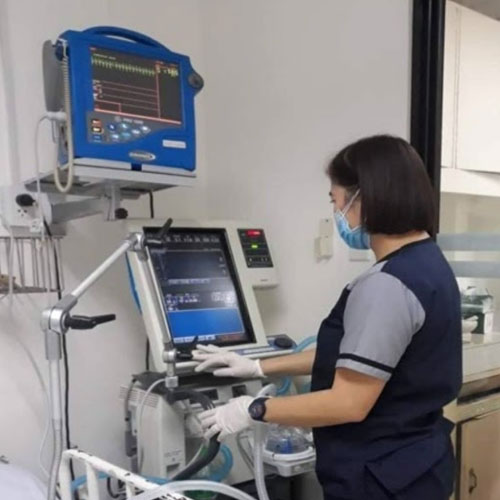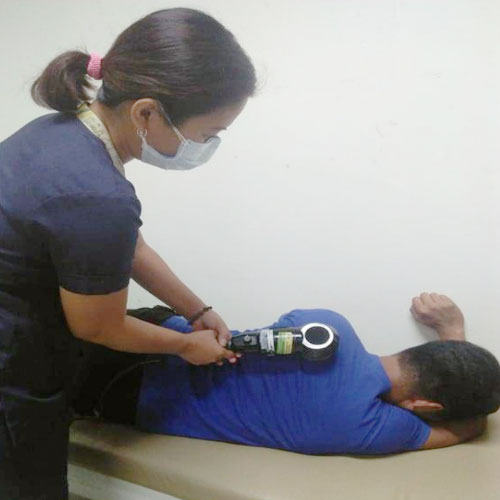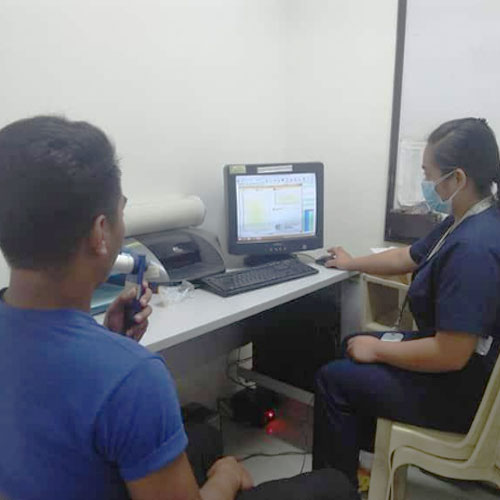PULMONARY SECTION
A special area in the ancillary department, with a multidisciplinary approach to reducing symptoms and improving the quality of health in patients with compromised lung function. This Section is operating 24 hours a day, staffed by highly trained and experienced Respiratory Therapists and Aides, working as a team involved in the Pulmonary diagnostic and therapeutic procedures of patients with the Medical Specialists using the state of the art machines.
Services Offered
1. AEROSOL THERAPY (nebulization)
– Route of drug administration through aerosolized medications to relieve
bronchospasm.
2. ARTERIAL BLOOD GAS DETERMINATION
– Test performed by extracting blood from the artery to measure the
PaCo2, PaO2, pH, HCO3 and oxygen saturation of the patient.
3. CHEST PHYSIO-THERAPY
– Tapping / vibrating technique on the lung area designed to mobilized
secretion and assist in bronchial hygiene.
4. IN- CHARGE OF MECHANICAL VENTILATORS
– A method of providing patients with mechanically assisted ventilation, its
set-up, maintenance, trouble shooting and patient weaning.
5. INCENTIVE SPIROMETRY
– Breathing exercises for post-operative patients with the use of an
incentive spirometer.
6. OXYGEN THERAPY
– Administration of supplemental oxygen to patients as a medical
intervention.
7. PEAK EXPIRATORY FLOW RATE
– To determine changes in lung function that signals the worsening of
patient’s lung condition especially in asthmatic patients, through the use
of peak flow meter.
8. PULMONARY FUNCTION TEST
– A test that measures lung function, volume and flow of air that can be
inhaled and exhaled, through the use of PC based spirometer.
9. PULSE OXIMETRY
– Provides non-invasive method of evaluating saturated oxygen in the
blood.
10. BIPAP
– It’s a type of ventilation treatment for people with sleep apnea and other
respiratory problems. BiPAP, or bilevel positive airway pressure (two
levels), is an adaptation of CPAP and falls into a group of treatments
called noninvasive ventilation (NIV).
11. Bubble CPAP
– Is a non-invasive ventilation strategy for newborns with infant respiratory
distress syndrome (IRDS). It is one of the methods by which continuous
positive airway pressure (CPAP) is delivered to a spontaneously breathing
newborn to maintain lung volumes during expiration.


